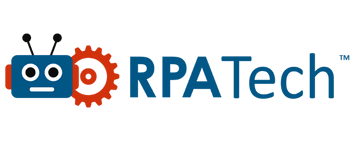In the realm of Robotic Process Automation (RPA), there’s a technology that’s been quietly transforming the way businesses handle data – OCR, or Optical Character Recognition. OCR in RPA is more than just an acronym; it’s a powerful tool that allows machines to read and understand text from images or scanned documents. In this comprehensive guide, we’ll delve into the world of OCR in RPA, exploring what it is, how it works, its applications, benefits, and challenges.
Table of Contents
What is OCR in RPA?
How Does OCR Work in RPA?
Applications of OCR in RPA
Benefits of OCR in RPA
Challenges and Limitations
Choosing the Right OCR Solution
Conclusion
1. What is OCR in RPA?
Optical Character Recognition (OCR) in Robotic Process Automation (RPA) is a technology that enables machines to recognize and extract text from images, scanned documents, or any form of unstructured data. In the context of RPA, OCR serves as a bridge between the physical and digital worlds, allowing software robots to process and analyze information that exists in non-digital formats.
2. How Does OCR Work in RPA?
OCR in RPA is achieved through a series of intricate processes:
– Image Acquisition: The RPA bot captures an image or scans a document containing text.
– Preprocessing: Image enhancement techniques are applied to improve the quality of the image, making it easier for OCR software to identify characters.
– Character Segmentation: The image is analyzed to isolate individual characters or words.
– Character Recognition: OCR software interprets the characters by matching them with predefined patterns or fonts.
– Post-processing: The recognized text is cleaned and formatted for further use in RPA workflows.
OCR technology employs machine learning algorithms, neural networks, and pattern recognition to improve accuracy over time. It can recognize printed and handwritten text in various languages, making it versatile for different use cases.
3. Applications of OCR in RPA
OCR in RPA opens up a world of possibilities across various industries:
– Data Entry Automation: RPA bots can extract data from invoices, receipts, and forms, reducing manual data entry.
– Document Classification: Automate the sorting and categorization of documents based on their content.
– Compliance and Auditing: Ensure regulatory compliance by analyzing documents and identifying non-compliance issues.
– Customer Service: Automatically process customer queries from handwritten forms or scanned documents.
– Financial Analysis: Extract data from financial reports for analysis and forecasting.
4. Benefits of OCR in RPA
The integration of OCR in RPA offers several advantages:
– Error Reduction: OCR technology significantly reduces the risk of manual data entry errors.
– Time and Cost Savings: Automating data extraction and entry tasks accelerates processes and cuts operational costs.
– Scalability: RPA bots equipped with OCR can handle a vast amount of data, scaling as business needs grow.
– Improved Compliance: Ensure data accuracy and compliance by automating regulatory document processing.
– Enhanced Customer Experience: Faster response times and accurate data handling lead to improved customer service.
5. Challenges and Limitations
Despite its many benefits, OCR in RPA does come with some challenges:
– Accuracy Issues: OCR accuracy can vary depending on the quality of the source material, leading to potential errors.
– Language and Font Constraints: OCR may struggle with handwriting, non-standard fonts, or languages it is not trained for.
– Maintenance: OCR systems require ongoing maintenance to adapt to changing document types and formats.
– Security Concerns: Handling sensitive data through OCR automation must be done securely to prevent data breaches.
6. Choosing the Right OCR Solution
When selecting an OCR solution for RPA, consider the following factors:
– Accuracy Evaluate the OCR’s accuracy on various document types.
– Language Support: Ensure the OCR supports the languages you require.
– Scalability: The OCR solution should be able to handle your current and future workload.
– Integration: Check if the OCR system can seamlessly integrate with your RPA platform.
– Costs: Consider the total cost of ownership, including licensing, maintenance, and support.
Conclusion
OCR in RPA is a transformative technology that streamlines data processing and unlocks new levels of automation. With OCR’s ability to extract, understand, and process text from images and scanned documents, RPA becomes even more potent. By reducing errors, saving time and costs, and enhancing compliance, OCR in RPA is helping businesses across industries achieve new levels of efficiency and accuracy. However, it’s essential to choose the right OCR solution and be aware of the challenges to fully harness its potential. As the digital and physical worlds continue to converge, OCR in RPA is set to play an increasingly crucial role in shaping the future of automation and data processing.




